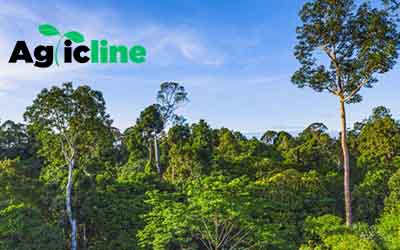Fire stick farming is an ancient land management technique practiced by Indigenous people across the globe, particularly noted among Aboriginal Australians.
This method involves the intentional lighting of small-scale fires with sticks, carefully controlled and managed, to clear underbrush, promote the growth of certain plant species, and facilitate hunting and gathering activities. These burns are typically conducted in a mosaic pattern, creating a patchwork of different ecological stages which support a diverse range of habitats and food sources.
This technique is not merely a method of land cultivation; it’s a profound testament to the intimate relationship between Indigenous cultures and their environments.
For tens of thousands of years, fire stick farming has played a pivotal role in shaping landscapes, supporting sustainable hunting practices, and ensuring the proliferation of beneficial plant species.
The traditional knowledge required for this practice is extensive, encompassing an understanding of seasonal cycles, animal behavior, plant growth, and fire behavior. This knowledge is passed down through generations, signifying a rich cultural heritage that encompasses both practical land management and a spiritual connection to the earth.
Origins of Fire Stick Farming Among Indigenous Populations
Fire stick farming is not a recent agricultural innovation but rather a practice deeply rooted in the ancient wisdom of indigenous populations.
Its origins trace back thousands of years, with some of the earliest evidence found in the cultural practices of Aboriginal Australians, who have inhabited the continent for over 65,000 years.
This technique was developed as a response to the need for regular clearing of undergrowth to facilitate hunting, reduce the risk of catastrophic bushfires, and encourage the growth of plants and animals that were beneficial for sustenance and medicinal purposes.
Beyond Australia, similar practices have been observed in the Americas, Africa, and parts of Asia, where native populations recognized the regenerative power of fire. It’s a testament to the profound understanding these cultures had of their environments; they knew that many ecosystems evolved to not only tolerate fire but to thrive because of it.
Traditional Knowledge and Ecological Understanding
The practice of fire stick farming is underpinned by an intricate body of traditional knowledge that reflects a deep ecological understanding. Indigenous practitioners could read the landscape like a book, understanding the signs and signals that dictated the right conditions for burning. They knew which winds would carry the flames, the humidity levels that would prevent the fire from becoming too aggressive, and the seasons that would ensure the best regrowth.
This ecological understanding also extended to the life cycles of local flora and fauna. For instance, certain plants would only germinate after exposure to smoke or fire, and so the deliberate application of fire stick farming techniques encouraged their proliferation.
Ecological Principles of Controlled Burns
Controlled burns, as practiced in fire stick farming, are based on the scientific understanding of fire as a natural ecological process. Many ecosystems have evolved with fire and even depend on it for regeneration.
The controlled application of fire helps to recycle nutrients tied up in old vegetation back into the soil, facilitating new growth. Fire also acts as a natural check against disease and pests by removing sick plants and reducing habitat for insects that could damage the ecosystem.
Fire stick farming utilizes low-intensity burns that are less destructive than wildfires and are conducted under specific conditions to ensure that the fire is contained.
Biodiversity and Fire-Adapted Ecosystems
Ecosystems that have evolved with regular fire intervals host species that are not only adapted to survive fires but also to take advantage of the post-fire environment.
Some plant species have seeds that only germinate after exposure to the heat or chemicals from smoke, while others have thick barks or buds that are protected from the heat. Animals, too, benefit from the mosaic of habitats created by patchy fire stick burns, as these provide a range of ecological niches to support diverse species.
Fire stick farming contributes to biodiversity by creating a variety of successional stages within the ecosystem. This diversity in structure and composition of the vegetation supports a wider array of animals and plants than would a uniform habitat.
Soil Fertility and Fire Stick Farming
The health of the soil is fundamental to the vitality of the ecosystem, and fire plays a critical role in maintaining soil fertility. By burning accumulated dead plant material, fire stick farming helps return nutrients to the soil more quickly than if the material were left to decompose naturally. The ash left behind from a burn is rich in potassium and phosphorus, essential nutrients for plant growth.
Moreover, fire can help to reduce the spread of plant diseases and the population of soil-borne pests that can negatively impact plant health. By periodically clearing the land of excessive leaf litter and debris, fire stick farming ensures that soils are less likely to become waterlogged and more conducive to seedling establishment, promoting a healthy and diverse plant community.
Benefits of Fire Stick Farming
See below;
- Prevention of Large Destructive Fires
- Management of Invasive Species
- Promotion of Native Species and Biodiversity
- Cultural Preservation and Education
Prevention of Large Destructive Fires
One of the most significant advantages of fire stick farming is its role in wildfire prevention. By regularly reducing the fuel load—the accumulated brush, leaf litter, and dead wood—controlled burns mitigate the risk of large-scale, high-intensity fires that can be devastating to the ecosystem and human communities.
This preemptive approach to fire management creates natural firebreaks and reduces the continuity of the fuel across the landscape, thereby limiting the potential spread and intensity of wildfires.
Management of Invasive Species
Fire stick farming can be an effective tool in managing invasive plant species that threaten local ecosystems. Many invasive species are not adapted to fire and can be controlled or even eradicated by regular burns.
This provides native species, which are often more fire-resistant due to their evolutionary history with natural fire regimes, with a competitive advantage. By carefully timing the burns, land managers can target the invasive species when they are most vulnerable, helping to restore the balance of native flora.
Promotion of Native Species and Biodiversity
The practice of fire stick farming is not merely about the reduction of fuel or the management of invasive species; it is also about the promotion of native species and overall biodiversity. Fire clears dense undergrowth, allowing sunlight to reach the forest floor and enabling a diversity of plant species to thrive.
This increased plant diversity provides a variety of food sources and habitats for animals, which leads to a more robust and complex ecosystem.
Cultural Preservation and Education
In addition to its environmental benefits, fire stick farming has deep cultural significance. It embodies centuries of indigenous knowledge and land stewardship, providing a living link to the past. By continuing the practice, communities maintain a connection to their ancestors and cultural heritage.
Challenges and Controversies
- Legal and Regulatory Hurdles
While fire stick farming has been practiced for thousands of years, it sometimes runs into conflict with contemporary legal and regulatory frameworks. Many countries have strict fire management laws that do not distinguish between uncontrolled wildfires and the intentional, controlled burns of fire stick farming.
- Misconceptions and Public Opposition
Public opposition to fire stick farming often stems from misconceptions about the role of fire in the environment. The prevailing view in many communities is that all fire is destructive and must be suppressed. This fear is exacerbated by media coverage of catastrophic wildfires, leading to a general reluctance to accept intentional burning as a positive tool for land management.
- Balancing Traditional Practices with Modern Environmentalism
Modern environmentalism often emphasizes conservation and the protection of natural resources, sometimes overlooking the role that humans have traditionally played in ecosystem management.
Modern Applications of Fire Stick Farming
- Fire Stick Farming in Contemporary Land Management
- Integrating Indigenous Knowledge with Modern Science
- The Role of Fire Stick Farming in Climate Change Mitigation
Fire stick farming pros and cons
Lets go;
Pros of Fire stick farming
Ecological Health
- Encourages the growth of native plant species adapted to fire regimes.
- Creates a mosaic of vegetation types, enhancing habitat diversity.
Wildfire Prevention
- Reduces fuel loads, which can lessen the severity and spread of wildfires.
- Results in smaller, less intense fires that are easier to manage.
Biodiversity Preservation
- Promotes biodiversity by clearing invasive species that compete with native flora.
- Supports the life cycles of certain fire-dependent species.
Soil Improvement
- Can improve soil quality by recycling nutrients back into the ground.
- Helps in the control of certain pests and diseases.
Cultural Benefits
- Maintains traditional practices and knowledge systems of Indigenous communities.
- Provides opportunities for cultural expression and education.
Economic Advantages
- Can potentially reduce the high costs associated with fighting catastrophic wildfires.
- Supports the cultivation of certain crops that benefit from the effects of periodic fires.
Cons of Fire stick farming
Air Quality Concerns
- Smoke from burning can contribute to air pollution and respiratory problems.
- Requires careful management to avoid adverse effects on air quality.
Risk of Escaping Fires
- If not properly controlled, there’s a risk that fires can escape and become wildfires.
- Requires experienced practitioners and careful planning.
Impact on Wildlife
- Some wildlife may be adversely affected by fire, particularly if they are unable to escape.
- Requires strategic timing to minimize the impact on animal populations.
Public Misunderstanding
- Can be met with resistance or concern from people unfamiliar with its benefits.
- Needs public education to gain broader acceptance.
Resource Intensive
- Requires significant human resources and knowledge to perform safely and effectively.
- Often requires coordination with fire services and other agencies.
Legal and Policy Barriers
- Modern fire regulations may hinder the practice of fire stick farming.
- Need for policy reform to allow for controlled burns within legal frameworks.
Climate Change Variables
- Changing climate patterns may affect the predictability and safety of burns.
- Requires adaptation of traditional knowledge to current climate conditions.
Concluding remark on Fire stick farming
The future of fire stick farming holds promise for the creation of more resilient landscapes and communities.
As the world becomes more aware of the limitations of modern land management practices, there is a growing interest in revisiting ancient practices that have stood the test of time. Fire stick farming, with its deep roots and proven benefits, is poised to become a key element in the global strategy for sustainable land use.
To ensure a future where ecosystems thrive and the risk of catastrophic fires is minimized, there is a need for a call to action. Land managers, policymakers, and communities must come together to recognize and implement sustainable land management practices, including fire stick farming.
This requires a concerted effort to reform policies that hinder the use of controlled burns, invest in research to further understand and optimize the practice, and educate the public about its benefits. It is time to proactively incorporate these ancient techniques into the modern environmental management arsenal.
The challenges of the present day call for solutions that are both innovative and time-tested. Encouraging a return to the wisdom of ancient practices like fire stick farming can provide the insights needed to address contemporary environmental issues.
Recommendations
What are the 10 problems of agriculture?
7 Best Methods of pest control in agriculture
Best fruits and vegetables to grow on a balcony



